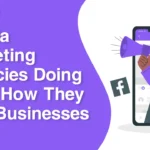Most people in digital marketing often ask, “How do I rank my website on Google?” But there’s a better question you should be asking: “How do search engines rank websites in the first place?”
At Marketing Maven, we believe understanding how search engines work is the key to building a powerful SEO strategy. So let’s explore this process step-by-step in the easiest way possible.
Why Do Search Engines Rank Pages?
Imagine if Google or Bing simply showed you random websites every time you searched something just because they had a lot of words or were recently updated. Would you still use it? Probably not.
Search engines don’t rank websites randomly because their main goal is to keep users happy. These users don’t belong to us; they belong to the search engine. We only get a chance to reach them if we offer helpful and trustworthy content.
If we show users poor content or a bad experience, they won’t just leave our site they might stop using the search engine itself. That’s a huge loss for platforms like Google, which make money when people return to search again and again.
It’s like Marketing Maven recommending a tool to its users. If it works great, our reputation goes up. But if users complain, we’d remove it. That’s how search engines think too.
A Little Disclaimer (And a Lot of Experience)
No, we don’t have secret microphones at Google HQ though with smartphones, maybe they have one on us!
What we do have is years of experience watching search engines evolve, reading search patents, testing SEO strategies, and learning from the best in the industry.
So, while no one knows 100% how everything works behind the scenes, this breakdown is about 90% accurate and that’s pretty solid when it comes to SEO.
Search Engines Rank a Page in Just 5 Simple Steps
Ranking a page on Google may seem like a big task, but it actually follows a simple 5-step process. We’re not going to talk about the deep technical stuff like load balancing or the detailed formulas behind search algorithms. Instead, let’s focus on the core steps that every search goes through from the moment someone types in a query to when they see search results.
At Marketing Maven, we believe that if you understand these steps, you’ll be able to think like a search engine and create content that truly reaches your audience.
Step 1: Understanding the Query
The first thing a search engine does is classify the search query. This helps it understand what kind of information the user wants. For example, it might tag the query as something local, educational, a product search, or even a sensitive topic.
Earlier, search engines mostly relied on keywords. But now, with smarter systems, they use entities and intent to understand the query better. By figuring out the type of query, the engine can choose the best approach for showing results.
Step 2: Adding Context to the Search
Once the query is classified, the next step is to look at context. This includes where the user is, what time it is, and even what kind of device they’re using. Has this user searched for something similar before? Is the question connected to an earlier one?
All of this helps search engines decide what kind of results will be most useful. For example, if someone searches for “coffee shops,” and they’re in Lahore, they’ll probably get local results, not cafes from London.
Step 3: Picking What Matters Most
This step is all about deciding which factors are important for that specific query. Some searches need fresh content, like “new Netflix shows,” while others care more about trusted sources, like searches about history or health.
Search engines like Google and Bing use machine learning systems to do this. One example is RankBrain, which helps decide which signals (like backlinks, content quality, or page speed) should carry more weight depending on the query type.
Step 4: Choosing the Right Layout
Not every search result page looks the same. That’s because search engines also decide how the results should look on the screen. Should they show a video, a featured snippet, a list of products, or just regular links?
The layout depends on the query and what kind of content people usually want to see for it. Search engines have to quickly figure this out and design the results page on the fly, unless it’s a common search they’ve already saved.
At Marketing Maven, we always keep this in mind when creating content we know it’s not just about ranking high, but also appearing in the right format that matches what users are expecting.
Step 5: Final Ranking
Now comes the actual ranking process deciding which pages show up first. This is when the engine combines everything from the previous steps: the type of query, the user’s context, what matters most for that kind of query, and how the page should look.
Then it pulls a list of pages, applies all the weights and rules, and decides the exact order in which results should appear. And it doesn’t just do this for normal web links it also ranks videos, news stories, and other elements on the page.
So even though ranking is the last step, it only works because of everything that came before it. That’s why it’s important to understand the full picture if you want your content to succeed.
At Marketing Maven, we break down the search process into these five easy steps to help you get better at SEO and digital marketing. Whether you’re a beginner or just looking to improve your website’s reach, knowing how search engines think is the first step to getting found online.
Another Words
Ranking a website might seem simple, but putting all the pieces together is where the real challenge begins.
You might wonder how knowing this helps with your SEO efforts. Well, think of it like using a computer. You may not know how to build a processor, but you understand what makes it faster and how cooling keeps it running well.
That basic understanding helps you keep your system fast and efficient without needing constant upgrades.
The same idea applies to SEO.
When you understand how the core of a search engine works, you start to see where your website fits into that system.
Ready to make SEO work for you instead of against you? Let Marketing Maven guide your strategy with smart, user-first solutions.
Contact us today and let’s turn your rankings into real results!





